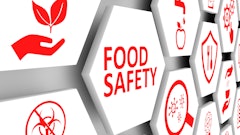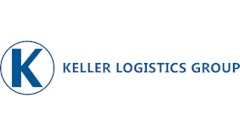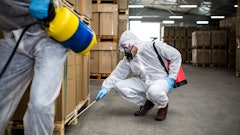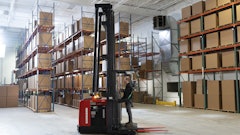SAFETY PROGRAM DESIGNS and implementations vary widely in industrial operations because they tend to reflect each organization’s operating environment and variety of exposures to losses that must be managed.
Adding to the variability in safety programs is the confusion surrounding which standards or guidelines to follow. In the last decade, the issue of best practices in safety program design has been addressed by standards-setting organizations around the world. And each one of their best practices programs outlines a different set of guidelines.
However, how well a program follows a format is not as important as whether the program components are effective in reducing risk. This article focuses upon the common themes in the many safety program best practice guidelines for evaluating program design and effectiveness. Safety program evaluations can take many forms, but all must carefully scrutinize each of the following eight common themes to ensure they are effectively integrated within the organization.
Management Leadership
Any safety program designed for employee and visitor safety and property protection starts with active and committed senior management that support the programs necessary to protect their workers and facilities. Management support is demonstrated by providing an appropriate operating budget, requesting reports on the program’s progress, following up when any issues might develop and following the rules themselves.
Here are some questions to help evaluate management leadership.
• What safety metrics are communicated to top management?
• How is top management involved with continuous improvement of the written safety program?
• How is management “visible” with respect to reinforcing safety in the eyes of employees?
• How is safety reflected in management job descriptions and factored into appraisals?
• How are safety goals developed and how are they made to permeate the organization?
• How is safety budgeted in the framework of improving existing processes and implementing new processes?
• How are safety programs and procedures periodically audited for both activities and outcomes?
Employee Participation
Help secure employee participation by soliciting their input, practicing the emergency plan, putting the plan in writing and assigning responsibilities to specific individuals.
For example, work with supervisors to assign someone on each shift the responsibility of returning your facility’s fire protection, detection and alarm signaling systems to operation when they go down.
Here are some questions to help evaluate employee participation.
• How are employees actively involved with safety for their respective areas/processes?
• How are employees involved in the planning process for operational changes with respect to safety?
• How is employee time managed with respect to safety program involvement?
• What incentives do employees have for participating in the safety program activities?
• How do management expectations of participation differ between new employees and experienced ones?
Measurement Indicators
“Leading indicators” identify a negative change from expectations. Identifying the leading indicators for your particular operation and determining the underlying cause of why accidents happen allow management to take action in the form of policies, means, or methods. For example, does a sudden increase in problems identified in monthly inspections indicate a greater likelihood of cuts, rashes or burns from equipment placement problems, inappropriate use of safety equipment or the condoning of horseplay?
• What components of your safety program are regularly measured?
• How is the quality of program components factored into the measurement system?
• How is the degree of risk reduction related to safety projects captured?
• What metrics are regularly captured, tracked, and communicated, e.g., days away or transferred case incident rate, workers compensation losses, open claims and finally, injury frequency?
• How are employees involved in developing the metrics by which they might be measured, e.g., behavioral safety data?
Risk Identification
Risk identification is an ongoing process that includes regular facility inspections to seek out both common and specific hazards. For example, spiral coolers, the conveyor belts that cool food products by winding them along a long circular path, are a specific hazard that is a design-caused risk.
The combustible loading, upward cooling drafts, closely spaced tiers and continuous product movement of spiral coolers can combine to cause a rapidly spreading fire that is hard to extinguish. Recent food industry losses show that plastic belts contribute to the rapid spread and development of fire, therefore, installing a metal conveyor belt can help reduce the combustible load. Other things to consider in mitigating a spiral cooler’s specific hazards are the presence of interlocks to shut down the conveyor if an alarm activates, the fire suppression system protecting the cooler, the food product temperature and the maintenance performed on the machinery.
To help you evaluate and identify risks:
• What are some of the ways residual risk is identified in existing systems?
• What ways risk is identified when planning new systems and processes?
• How is the accident investigation program being administered?
• How is risk prioritized for focusing business resources?
• How are human and design-based exposures differentiated?
Risk Analysis
If your operation uses conveyors, be aware that the performance issues that most often lead to injury from conveyors include: operating without authority; failure to follow start-up procedures; by-passing guarding; working on moving equipment; overloading; not following lockout procedures; and failure to inspect and test machinery and controls. Mandating that only trained personnel can operate facility equipment is one way to help minimize the frequency of these performance issues.
The questions below will help guide your overall risk analysis.
• How is risk analyzed with respect to potential outcomes, e.g., overexertion, falls, amputation, repetitive trauma?
• How is risk that might be associated with production imperatives being integrated into the analysis?
• How is human error being factored into the analysis?
• How is variability in individual behavior factored into the analysis?
• How is physical variability factored into the analysis?
Risk Remediation
Risk remediation should focus on both the safety of an individual employee as well as how each employee’s actions impact the rest of the workforce. For example, proper training of the employee in charge of testing and maintaining your facility’s fire protection system helps prevent that employee from injury and keeps the entire workforce safe with a properly maintained system.
According to the National Fire Protection Association, 21 percent of the automatic extinguishing systems that fail to operate in a fire are due to lack of maintenance.
Assigning responsibility to employees for specific jobs, training them and making them familiar with the overall emergency plan will help address common exposures such as fire, tornado, robbery and bomb threat.
• What changes have been made in existing processes that reduce risk?
• What has been done to reduce the risk of the leading loss areas with respect to engineering, behavior, education and environment?
• How are Job Safety Analyses used in new employee orientation/training?
• How does the preventive maintenance process incorporate safety?
• How is safety included in initiatives such as Kaizen, Lean or 5S?
• What is your company policy with respect to procuring and safeguarding newly acquired equipment—new and used?
• How are workplace changes prompted by return to work processes incorporated into other similar jobs?
• How is management and employee safety training developed and administered to address issues relating specifically to jobs and tasks as well as safety program management?
• What programs exist to influence and reward safe behavior?
• What programs exist to follow up on facility inspections?
• What programs are in place to respond to terrorist threats, acute workplace violence incidents, severe environmental threats and natural catastrophes?
Injury Management
Improving the way supervisors respond to employees’ work-related health and safety concerns can produce significant and sustainable reductions in future injury claims and disability costs. In fact, supervisors trained to properly respond, communicate and problem solve with employees reduced new disability claims by 47 percent and active lost-time claims by 18 percent, according to findings from the Liberty Mutual Research Institute for Safety.
Even a single, two-hour workshop for super-visors can result in employees reporting discomfort more promptly, feeling less blamed and having more positive discussions with supervisors after injuries.
• What systems exist to encourage employees to report all injuries and musculoskeletal symptoms?
• What level and types of medical treatment are available on site?
• How does the return to work process operate, particularly with respect to communication with medical providers and provision of modified duty?
• Who regularly communicates with those who are out of work due to an injury?
Communication
Employees need to know company policies and procedures—that you want work performed safely—and all employees should receive regular updates and reinforcement of work rules, hazard recognition, and equipment selection. To be effective, training should go beyond the standard lecture to deliver information through demonstrations, workshops and hands-on activities. Also, do not limit training to non-management employees.
Management personnel need safety training to ensure proper implementation, enforcement and assessment of your company’s plan. For example, as part of his duties a new supervisor enforces the safety program. Do not assume that he has the right tools to do that job. Knowing and following a safety program is not the same as knowing the work rules and making sure that others follow them. New supervisors need help learning how to manage people, provide feedback, and use discipline when appropriate.
The questions below will help you improve communication regarding safety policies and procedures in your organization.
• How do you ensure the competency of those who do on-the-job training?
• How are safety metrics communicated to the workforce?
• How often do employees receive formal safety instructions (not including signs)?
• What incentives do employees have for making safety suggestions, and what response do they receive?
• What efforts are made to integrate safety with other production and process methodologies such as Six Sigma or 5S?
• How does your company remain up-to-date with current regulations and standards and communicate them to operations management and employees?
• How are individual serious injuries and accidents communicated to management?
There are many different opinions about the right approach to safety programs and some companies will have mature, highly effective safety programs while others may focus entirely on fulfilling their regulatory responsibilities—which leaves much room for improvement. The companies that weave a continuously improving safety program into alignment with production process management and include cross-functional managerial and employee involvement, will have the most success at achieving the ultimate goal of having all employees return home safely from work every day.
Braun is loss prevention product director at the Liberty Mutual Research Institute for Safety, Hopkinton, MA. Bauroth is account engineer manager at Liberty Mutual Property, Boston.















